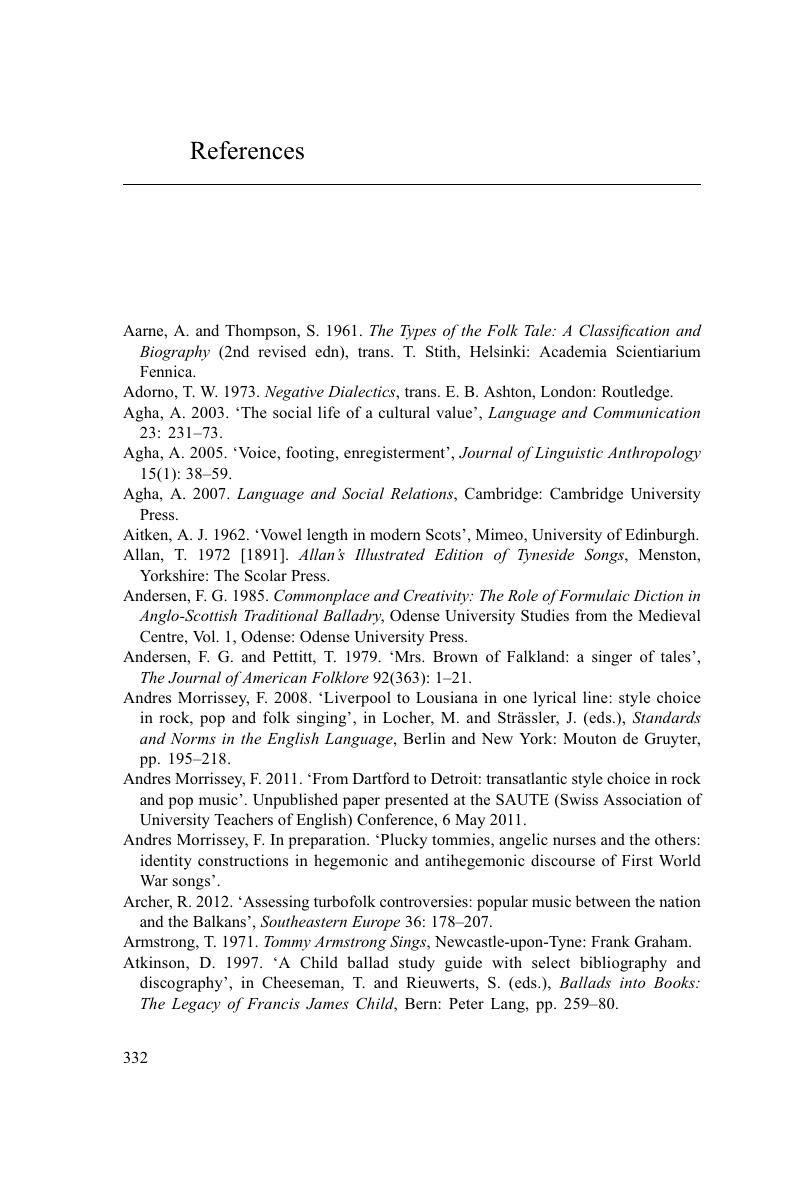Book contents
- Language, the Singer and the Song
- Language, the Singer and the Song
- Copyright page
- Contents
- Images
- Figures
- Tables
- Preface
- Introduction
- Prologue
- Part I Creating Community and Identity through Song
- Part II Variation in Language and Folk Song
- Part III Folk Song Performance and Linguistics
- Epilogue
- Appendix Overview of Musical Concepts
- References
- Index
- References
References
Published online by Cambridge University Press: 12 January 2019
- Language, the Singer and the Song
- Language, the Singer and the Song
- Copyright page
- Contents
- Images
- Figures
- Tables
- Preface
- Introduction
- Prologue
- Part I Creating Community and Identity through Song
- Part II Variation in Language and Folk Song
- Part III Folk Song Performance and Linguistics
- Epilogue
- Appendix Overview of Musical Concepts
- References
- Index
- References
Summary

- Type
- Chapter
- Information
- Language, the Singer and the SongThe Sociolinguistics of Folk Performance, pp. 332 - 346Publisher: Cambridge University PressPrint publication year: 2019

